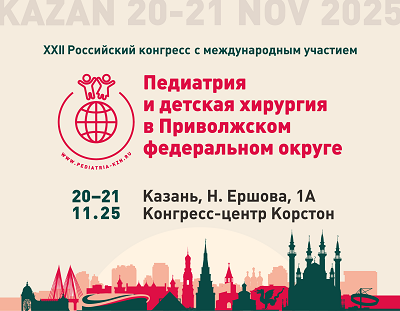Organization of dispensary and dynamic observation of children with heterozygous familial hypercholesterolemia: the experience of the Republic of Tatarstan
https://doi.org/10.21508/1027-4065-2025-70-5-158-167
Abstract
Familial hypercholesterolemia is the most common monogenic hereditary disease in which abnormally high cholesterol levels in the blood are observed since childhood. There is currently no unified approach to monitoring and stratifying cardiovascular risk for children with familial hypercholesterolemia in Russia.
Aim of the study: to develop a monitoring program for children with heterozygous familial hypercholesterolemia based on a 3-year prospective observation.
Materials and methods. From 2017 to 2024, a comparative prospective longitudinal cohort study was conducted at the Children’s Lipidology Center of the Republican Children’s Clinical Hospital of the Ministry of Health of the Republic of Tatarstan (Kazan). The study involved 243 children aged 5 to 17 years: 122 children diagnosed with «familial hypercholesterolemia, heterozygous form» and 121 healthy children. The children were divided into 3 age subgroups: 5–7 years, 8–12 years, 13–17 years. Special examination methods included: study of endothelin-1 level, total concentration of stable nitric oxide metabolites, apolipoprotein A1, apolipoprotein B, lipoprotein (a), high-sensitivity C-reactive protein, determination of average pulse wave velocity in the aorta, assessment of the intima-media complex of the common carotid artery.
Results. Concentrations of apolipoprotein A1 and apolipoprotein B, lipoprotein (a) and high-sensitivity C-reactive protein were significantly higher in the main group and did not change with the age of the patients. The values of the intima-media thickness of the common carotid artery and pulse wave velocity, endothelin-1 level depended on the age of children with familial hypercholesterolemia. The obtained results determined the existence of regular differences in the strategy of management of patients with familial hypercholesterolemia in childhood and allowed to scientifically substantiate the program of observation of patients with heterozygous familial hypercholesterolemia in childhood.
Conclusion. The proposed algorithm will allow to register early signs of vascular remodeling and to draw up a plan of personalized observation of a child with familial hypercholesterolemia.
Keywords
About the Authors
L. F. GalimovaRussian Federation
420138, Kazan; 420012, Kazan
D. I. Sadykova
Russian Federation
420012, Kazan
I. V. Leontyeva
Russian Federation
125412, Moscow
E. S. Slastnikova
Russian Federation
420138, Kazan; 420012, Kazan
Ch. D. Khaliullina
Russian Federation
420012, Kazan
K. R. Salahova
Russian Federation
420012, Kazan
References
1. Russian statistical yearbook 2022: statistical collection. Rosstat. M., 2022; 691 (in Russ) https://rosstat.gov.ru/storage/mediabank/Ejegodnik_2022.pdf. ссылка активна на 10.06.2025
2. Kukharchuk V.V., Ezhov M.V., Sergienko I.V., Arabidze G.G., Bubnova M.G., Balakhonova T.V., et al. Diagnostics and correction of lipid metabolism disorders in order to prevent and treat atherosclerosis. Russian recommendations, VII revision. Ateroskleroz i dislipidemii. 2020; 1(38): 7–42. (in Russ) DOI: 10.34687/2219-8202.JAD.2020.01.0002
3. Majithia A.R., Altshuler D., Hirschhorn J.N. Williams Textbook of Endocrinology (Thirteenth Edition). Philadelphia: Elsivier, 2016; 1916. DOI: 10.1016/C2013-0-15980-6
4. Gorabi A.M., Kiaie N., Hajighasemi S., Banach M., Penson P.E., Jamialahmadi T., Sahebkar A. Statin-Induced Nitric Oxide Signaling: Mechanisms and Therapeutic Implications. J Clin Med. 2019; 8(12): 2051. DOI: 10.3390/jcm8122051
5. Wiegman A., Gidding S.S., Watts G.F., Chapman M.J., Ginsberg H.N., Cuchel M. et al. European Atherosclerosis Society Consensus Panel. Familial hypercholesterolaemia in children and adolescents: gaining decades of life by optimizing detection and treatment. Eur Heart J. 2015; 36(36): 2425–2437. DOI: 10.1093/eurheartj/ehv157
6. Chubykina U.V., Afanasyeva O.I., Tmoyan N.A., Ezhov M.V. Monitoring and screening programs for patients with familial hypercholesterolemia. Ateroskleroz i dislipidemii. 2020; 2(39): 43–48. (in Russ) DOI: 10.34687/2219-8202.JAD.2020.02.0006
7. Dharmayat K.I., Vallejo-Vaz A.J., Stevens C.A.T., Brandts J.M., Lyons A.R.M., Groselj U., et al. Familial hypercholesterolaemia in children and adolescents from 48 countries: a cross-sectional study. The Lancet 2024; 403: 55–66. DOI: 10.1016/S0140–6736(23)01842–1
8. Catapano A.L., Graham I., De Backer G., Wiklund O., Chapman M.J., Drexel H., et al. ESC Scientific Document Group. 2016 ESC/EAS Guidelines for the Management of Dyslipidaemias. Eur Heart J. 2016; 37(39): 2999–3058. DOI: 10.1093/eurheartj/ehw272
9. Ezhov M.V., Bazhan S.S., Ershova A.I., Meshkov A.N., Sokolov A.A., Kukharchuk V.V., et al. Clinical guidelines for familial hypercholesterolemia. Ateroscleroz. 2019; 15(1): 58–98. (in Russ)
10. Neunteufl T., Heher S., Katzenschlager R., Wölfl G., Kostner K., Maurer G., Weidinger F. Late prognostic value of flow-mediated dilation in the brachial artery of patients with chest pain. Am J Cardiol. 2000; 86(2): 207–210. DOI: 10.1016/s0002-9149(00)00857-2
11. Suhett L.G., Hermsdorff H.M., Rocha N.P., Silva M.A., Filgueiras M.S., Milagres L.C. et al. Increased C-Reactive Protein in Brazilian Children: Association with Cardiometabolic Risk and Metabolic Syndrome Components (PASE Study). Cardiol Res Pract. 2019; 2019: 3904568. DOI: 10.1155/2019/3904568
12. Anderson T.J., Grégoire J., Pearson G.J., Barry A.R., Couture P., Dawes M. 2016 Canadian Cardiovascular Society Guidelines for the Management of Dyslipidemia for the Prevention of Cardiovascular Disease in the Adult. Can J Cardiol. 2016; 32(11): 1263–1282. DOI: 10.1016/j.cjca.2016.07.510
13. Lampsas S., Xenou M., Oikonomou E., Pantelidis P., Lysandrou A., Sarantos S. Lipoprotein(a) in Atherosclerotic Diseases: From Pathophysiology to Diagnosis and Treatment. Molecules. 2023; 28(3): 969. DOI: 10.3390/molecules28030969
Review
For citations:
Galimova L.F., Sadykova D.I., Leontyeva I.V., Slastnikova E.S., Khaliullina Ch.D., Salahova K.R. Organization of dispensary and dynamic observation of children with heterozygous familial hypercholesterolemia: the experience of the Republic of Tatarstan. Rossiyskiy Vestnik Perinatologii i Pediatrii (Russian Bulletin of Perinatology and Pediatrics). 2025;70(5):157-167. (In Russ.) https://doi.org/10.21508/1027-4065-2025-70-5-158-167










































